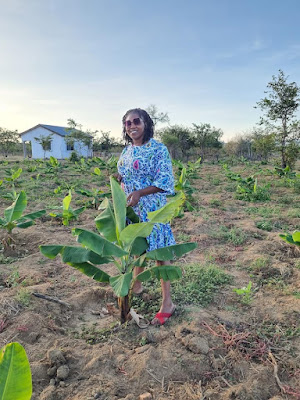Climate change could negatively impact banana cultivation in some of the world’s most important producing and exporting countries, a study has revealed.
Bananas are recognised as the most important fruit crop – providing
food, nutrition and income for millions in both rural and urban areas across
the globe.
While many reports have looked at the impact of climate change on
agricultural production, the effect of rising temperatures and changing
rainfall has on crucial tropical crops such as the banana are less well
understood.
In a new study, led by Dr. Dan Bebber from the University of Exeter,
scientists have studied both the recent and future impact of climate change on
the world’s leading banana producers and exporters.
It shows that 27 countries – accounting for 86% of the world’s dessert
banana production – have on average seen increased crop yield since 1961 due to
the changing climate resulting in more favourable growing conditions.
However, crucially the report also suggests that these gains could be
significantly reduced, or disappear completely, by 2050 if climate change
continues at its expected rate.
It suggests that 10 countries – including the world’s largest producer
and consumer of bananas, India and the fourth largest producer, Brazil – are
predicted to see a significant decline in crop yields.
The study does highlight that some countries – including Ecuador (the
largest exporter) and Honduras, as well as a number of African countries – may
see an overall benefit in crop yields.
Dr. Bebber, a Senior Lecturer in Biosciences at the University of Exeter
said: “We’re very concerned about the impact of diseases like Fusarium Wilt on
bananas, but the impacts of climate change have been largely ignored. There
will be winners and losers in coming years, and our study may stimulate
vulnerable countries to prepare through investment in technologies like irrigation.”
Grown throughout the tropics and subtropics, bananas are a key crop for
millions of people across the world. In Britain, for example, more than five
billion bananas are purchased each year, and the UK accounts for 7% of the
global export market.
Such international trade can play a pivotal role to local and national
economies in producing countries. For example, bananas and their derived
products constitute the second largest agricultural export commodity of Ecuador
and Costa Rica.
Given this importance, predicting the potential impacts of climate
change on banana production systems is crucial to ensuring its long-term
survival.
In this new study, the team assessed the climate sensitivity of global
dessert banana productivity or yield using sophisticated modelling techniques.
It showed that by 2050, any positive effects of climate change on
average global banana yields, though likely to continue, will be significantly
lessened.
Ten countries are predicted to show at least a negative trend, if not
strong declines in yields. These include some of the largest producers such as
India and Brazil, as well as Colombia, Costa Rica, Guatemala, Panama and the
Philippines, all of which are major exporters.
Dr. Bebber added: “It is imperative that we invest in preparing tropical
agriculture for future climate change.”
Dr. Varun Varma, Research Fellow at the University of Exeter and an
author of the study said: “An open exchange of ideas is going to be critical
going forward. We believe practical solutions already exist, but these are
scattered across banana producing countries. This knowledge exchange needs to
start now to counteract predicted yield losses due to climate change.”

Comments
Post a Comment